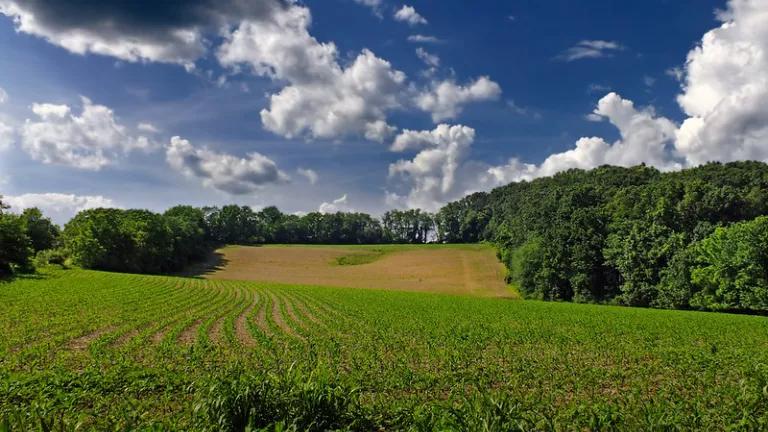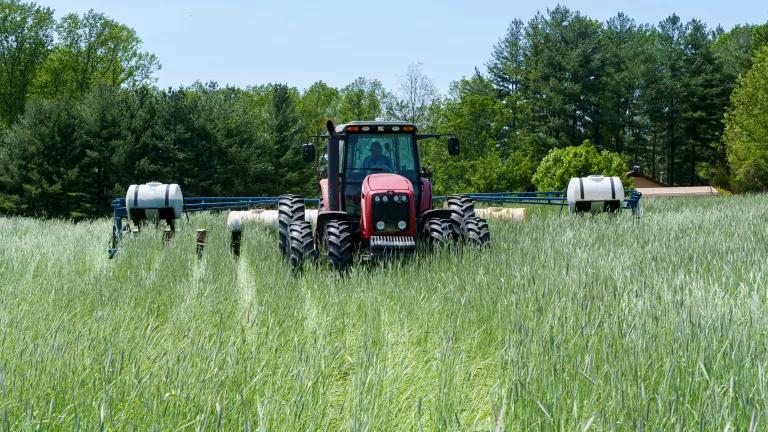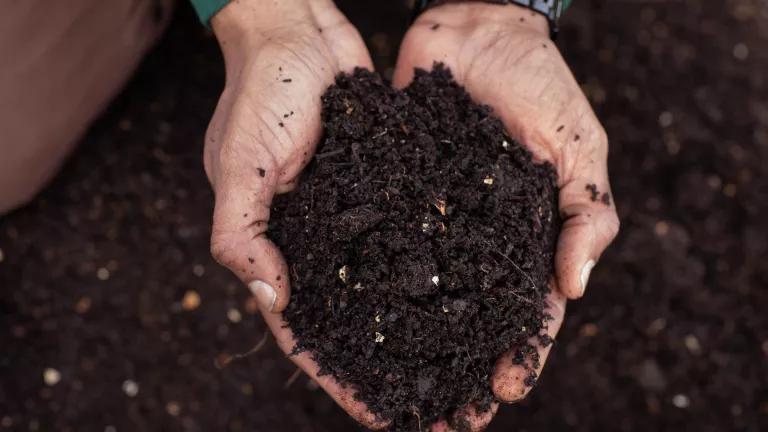5 Ways New Crop Insurance Bill Advances Soil Health
The COVER Act offers farmers who plant cover crops—a soil health practice with climate, water, and biodiversity benefits—a savings of $5 per acre off their crop insurance bills.

Field of cover crops in Pennsylvania
Nicholas_T, Flickr, https://www.flickr.com/photos/nicholas_t/7359959102
Representative Sean Casten (D-IL) and Representative Cindy Axne (D-IA) introduced legislation that could be a real game-changer for soil health practices across the nation, and it’s in time for Farm Bill writers to take note. The COVER Act offers farmers who plant cover crops – a soil health practice with climate, water, and biodiversity benefits– a savings of $5 per acre off their crop insurance bills. USDA offered a similar incentive ad hoc for the past two years in a popular program that enrolled over 12 million acres across 48 states. Now, the COVER Act would make this opportunity long-term. The brilliance of this bill is that it uses an existing federal program, crop insurance, to provide voluntary financial incentives to farmers while also building soil health. Here are 5 reasons why the COVER Act is a game-changer for soil health and should be included in the next Farm Bill.
1. Crop Insurance Incentives Will Convince New Farmers to Try Cover Crops
A 2013 farmer survey conducted by USDA’s Sustainable Agriculture Research and Education (SARE) program asked 242 farmers who don’t use cover crops about crop insurance incentives, and 70% of them said a discount in crop insurance premiums could potentially influence them to use cover crops. Many farmers who are early adopters of the practice testify that cover crops are worth every penny and usually save money in the long-term by reducing other input costs (fuel, herbicides and pesticides, and fertilizer). But, due to numerous reasons including the time and cost of learning to implement, cover crops are only planted on about 4% of cropland acres, according to 2017 Census of Agriculture data. This program would be a very cost-effective way to bridge the gap and convert new users into cover crop pros while helping to reach state and national goals of increased cover crop adoption.
2. Cover Crops Promote Climate Resilience, Biodiversity, and Water Quality
Experts say that in the soil health toolbox, cover crops are like a Swiss-Army knife. They are multifunctional; they prevent erosion, reduce water pollution, feed soil microbes, improve soil’s capacity to use nutrients efficiently, improve soil structure for easier plant growth and more efficient water use, and add carbon to the soil. Similarly, improved soil health from practices like cover crops is a multi-functional way to address the triple threat of climate change, biodiversity loss, and water quality.
3. Risk Management and Soil Health Go Together
Healthy soil is a time-tested risk management tool. When soil is healthy, it can retain more water in times of drought and reduce the need for irrigation, filter water more effectively when there’s too much rain and reduce losses related to delayed or prevented planting, and even help crops handle heat stress by reducing the soil temperature, helping roots grow and take up water and nutrients during heat waves. In short, healthy soil makes farms and ranches more resilient to the extreme weather impacts of climate change. It follows that risk management and soil health should go together in farm policy but historically, that hasn’t been the case, and farmers have suffered while the program has gotten more expensive as a result. Insurance payouts due to drought and flood have increased by more than threefold in the past 25 years, according to a report by Environmental Working Group. To make sure that crop insurance remains a strong component of the farm safety net, it’s crucial that the program utilize all risk management tools—including soil health—to help farmers weather tough times and reduce the burden of rising costs of the program to taxpayers.
4. Crop Insurance Incentive Programs for Cover Crops Have Bi-partisan Support
The COVER Act is modeled on state and national programs that had strong bi-partisan support. The original Iowa Cover Crop Demonstration Pilot was an initiative of Iowa’s Secretary of Agriculture at the time, Bill Northey, a Republican. The Illinois Fall Cover for Spring Savings program has enjoyed support on both sides of the aisle, and a recent Republican-led Wisconsin bill authorizing a program passed a Republican-led legislature on a unanimous vote and then was signed by Governor Tony Evers, a Democrat. Finally, the Biden Administration’s USDA launched the Pandemic Cover Crop Program in 2021. The COVER Act would provide long-term, national support for a program modeled on those that have already had strong support from Democrats and Republicans, environmental organizations, sustainable agriculture groups, and commodity organizations. With so few things that people seem to be able to agree on these days, it’s worth celebrating ideas and legislation that have the potential to generate this kind of support.
5. The COVER Act Provides a Soil Health Pilot Option for Additional Practices
Context is a core principle of regenerative agriculture. Not all farms are the same, and practices vary depending on the land and what the producer wants to grow. The bill has a provision that will give more options for producers using a range of practices to build soil health into their risk management strategy – compost, for example. Compost adds carbon and other nutrients to the soil, while avoiding GHG emissions from food waste that would otherwise be sent to landfills. We like this provision in the bill because it opens up opportunities to include even more producers in the program, who prioritize soil health as part of their risk management strategy.
NRDC endorses the COVER Act, and we will be working hard to make sure lawmakers know the many benefits of including a crop insurance incentive for soil health in the next Farm Bill.




